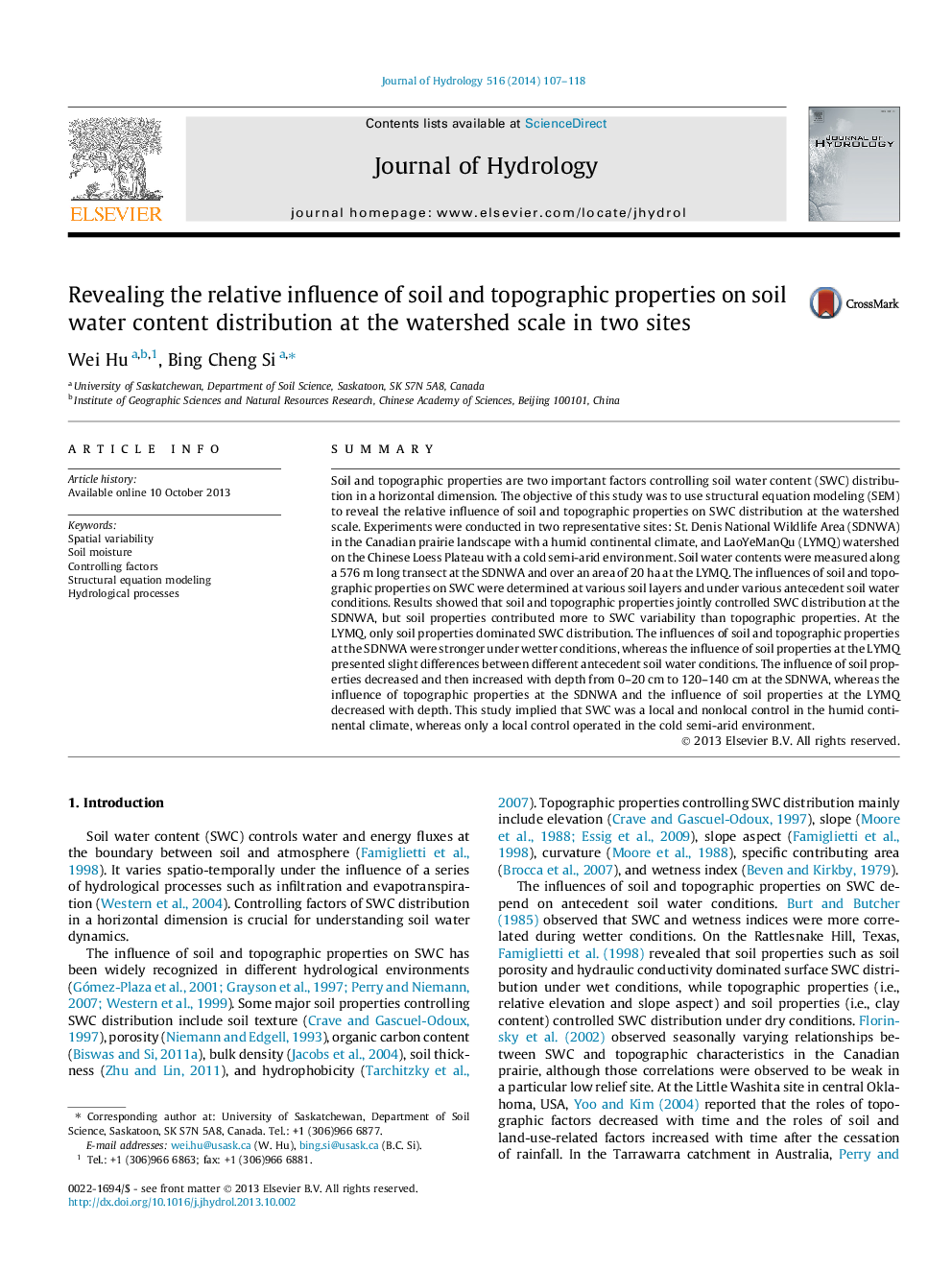| Article ID | Journal | Published Year | Pages | File Type |
|---|---|---|---|---|
| 6412661 | Journal of Hydrology | 2014 | 12 Pages |
â¢SEM was used to assess the influences of soil and topographic properties on SWC at two sites.â¢SWC was controlled by both properties but more by soil at SDNWA with a humid continental climate.â¢Only soil properties controlled SWC at LYMQ with a cold semi-arid climate.â¢Stronger influences of soil and topographic properties existed under wetter conditions at SDNWA.â¢Influences of soil and topographic properties varied with soil layers at both sites.
SummarySoil and topographic properties are two important factors controlling soil water content (SWC) distribution in a horizontal dimension. The objective of this study was to use structural equation modeling (SEM) to reveal the relative influence of soil and topographic properties on SWC distribution at the watershed scale. Experiments were conducted in two representative sites: St. Denis National Wildlife Area (SDNWA) in the Canadian prairie landscape with a humid continental climate, and LaoYeManQu (LYMQ) watershed on the Chinese Loess Plateau with a cold semi-arid environment. Soil water contents were measured along a 576Â m long transect at the SDNWA and over an area of 20Â ha at the LYMQ. The influences of soil and topographic properties on SWC were determined at various soil layers and under various antecedent soil water conditions. Results showed that soil and topographic properties jointly controlled SWC distribution at the SDNWA, but soil properties contributed more to SWC variability than topographic properties. At the LYMQ, only soil properties dominated SWC distribution. The influences of soil and topographic properties at the SDNWA were stronger under wetter conditions, whereas the influence of soil properties at the LYMQ presented slight differences between different antecedent soil water conditions. The influence of soil properties decreased and then increased with depth from 0-20Â cm to 120-140Â cm at the SDNWA, whereas the influence of topographic properties at the SDNWA and the influence of soil properties at the LYMQ decreased with depth. This study implied that SWC was a local and nonlocal control in the humid continental climate, whereas only a local control operated in the cold semi-arid environment.
